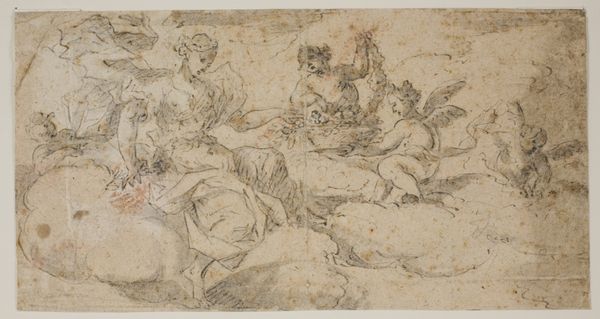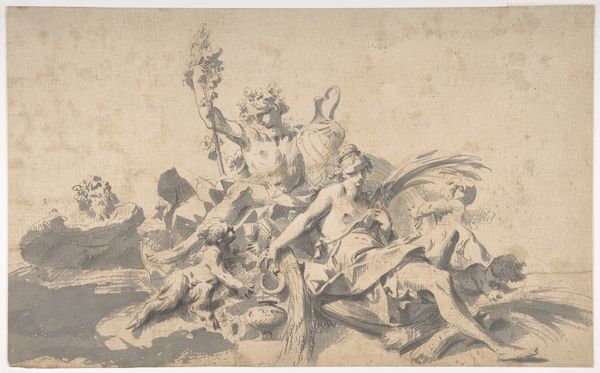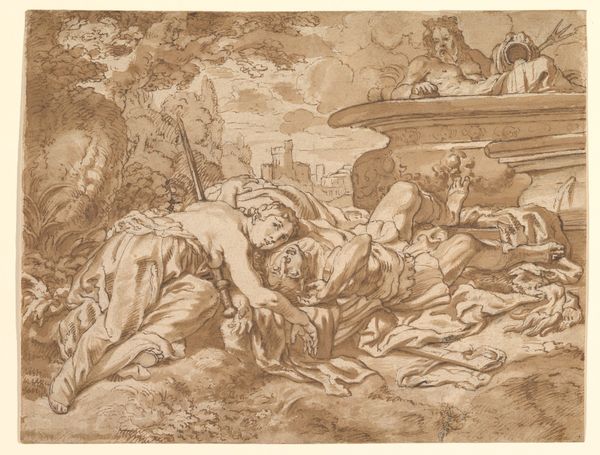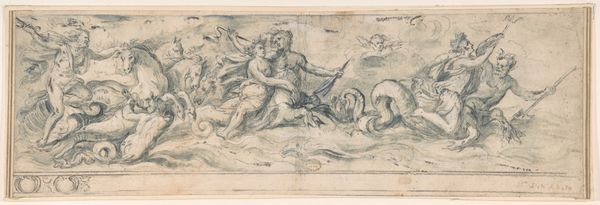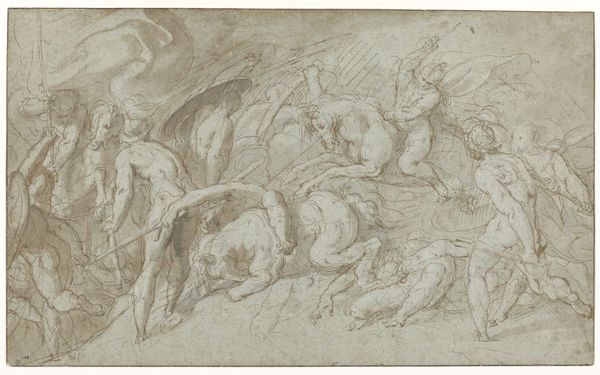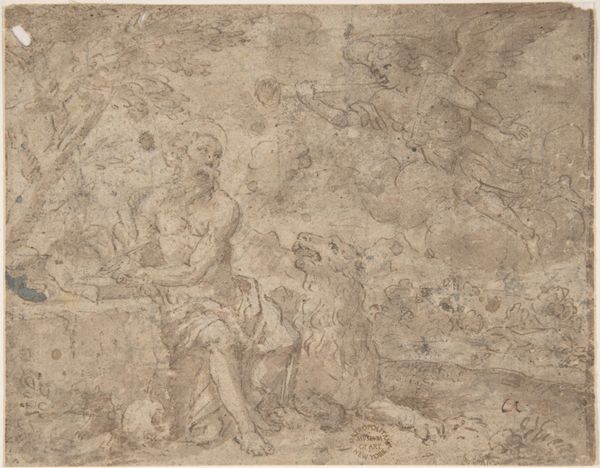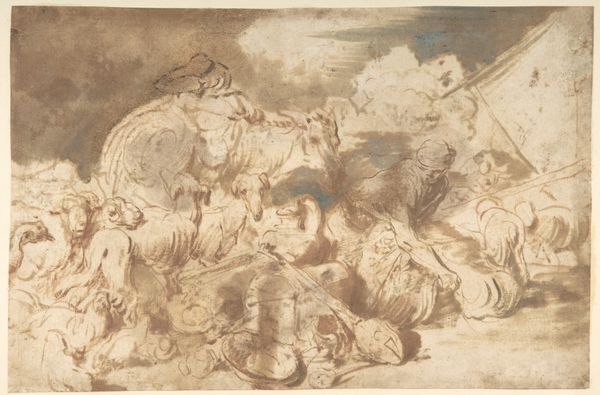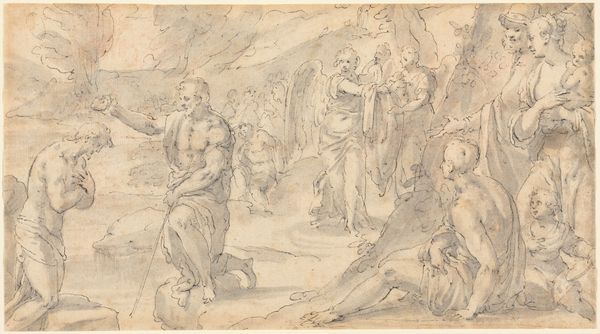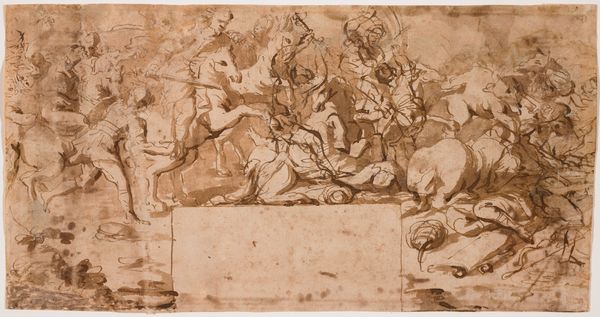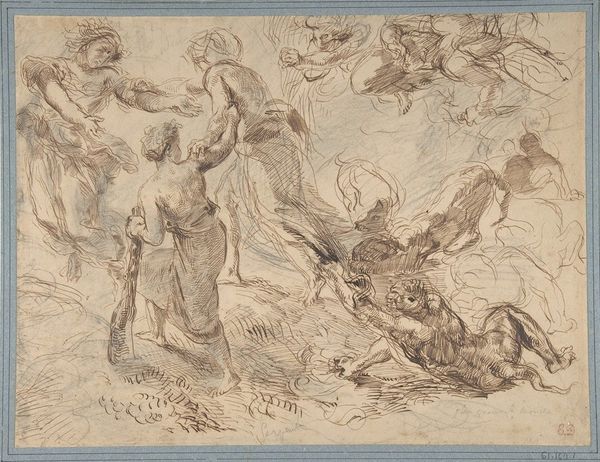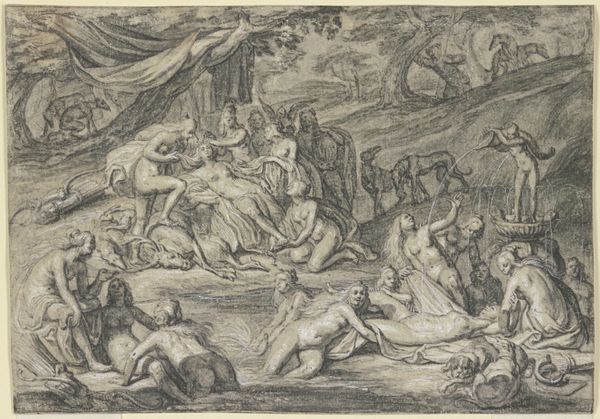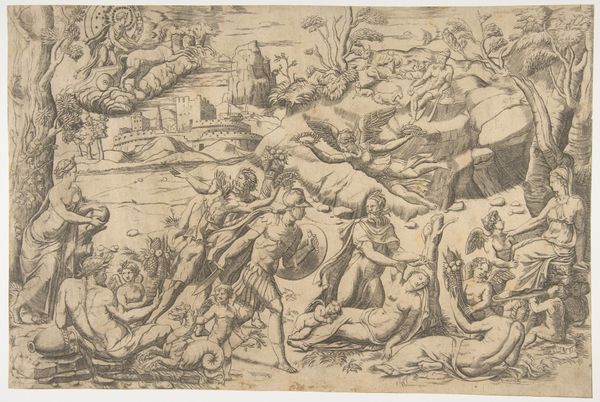
Personifications of the Nile, Indus, Tigris and Euphrates rivers 1590 - 1640
0:00
0:00
drawing, print, ink, pencil
#
drawing
#
allegory
#
ink painting
# print
#
pencil sketch
#
landscape
#
figuration
#
11_renaissance
#
ink
#
pencil
#
history-painting
#
academic-art
Dimensions: 18 3/8 x 23 1/4 in. (46.7 x 59 cm)
Copyright: Public Domain
Curator: Before us, we have "Personifications of the Nile, Indus, Tigris, and Euphrates Rivers," a drawing made with pencil and ink around 1590 to 1640. The artist remains anonymous. Editor: My first impression is a powerful sense of Baroque dynamism, all captured in the sinuous lines of the figures and creatures. There’s a distinct sense of swirling energy. Curator: Indeed. Given its probable dating, this piece comes to us at a particularly poignant moment in cross-cultural exchange, reflecting increasing contact between Europe and the ancient river valley civilizations of the Middle East and Asia. The classical allegorical forms speak to Europe's cultural heritage, while the rivers themselves are now understood in a global context of empire-building. Editor: You see the composition almost divided in half, with two groups, the twinned female figures and aged patriarchs bookending the groups on either side of a more central arrangement with the two tigers and a child. I want to ask what purpose the asymmetry provides in a classical drawing of allegories. Curator: These personifications become loaded signifiers for a world that is slowly becoming connected through trade, pilgrimage, and unfortunately, war. The depiction itself risks exoticizing, almost as a resource for Western understanding, particularly given that we don't know the identity nor cultural origin of the draughtsman. How does the depiction, say of the tigers versus the crocodiles, relate to trade networks? Editor: A crucial point, given the unevenness with which different parts of the world were and continue to be depicted in Western art, it may indicate areas or goods available for extraction through force. What is less apparent here are the formal components used, it relies on contrast and depth created solely through lines and careful application of shading and tone, considering the political dimensions of a piece like this helps us really unlock how that simple structure functions. Curator: And through understanding both those formal components and the broader social forces that went into the creation and viewing of this artwork, we can develop a much more multifaceted vision. Editor: Right. It’s a constant interplay between close observation and critical awareness, allowing a much deeper comprehension.
Comments
No comments
Be the first to comment and join the conversation on the ultimate creative platform.
